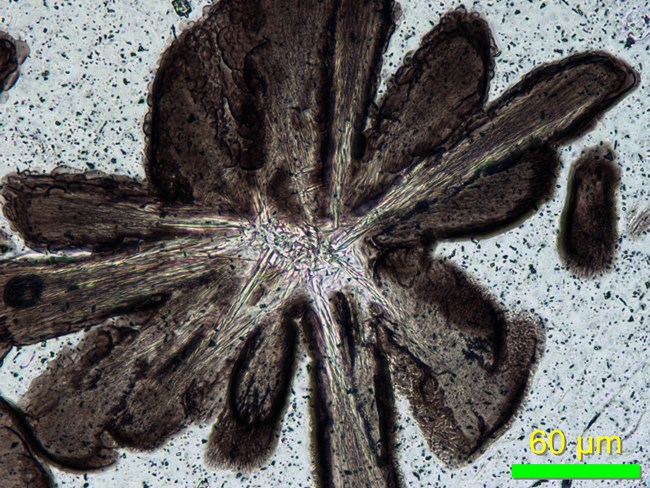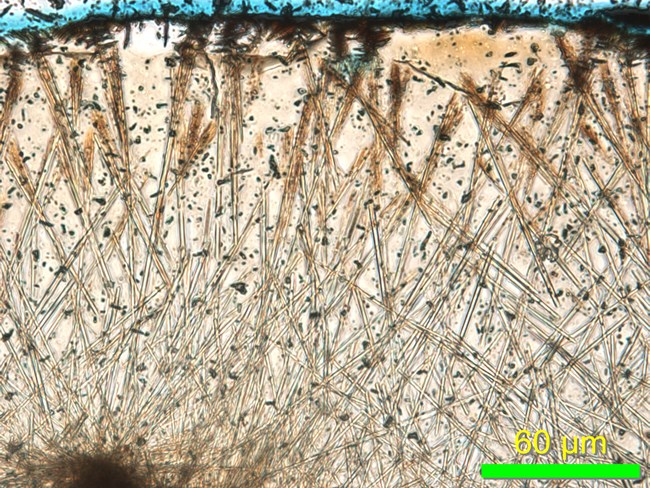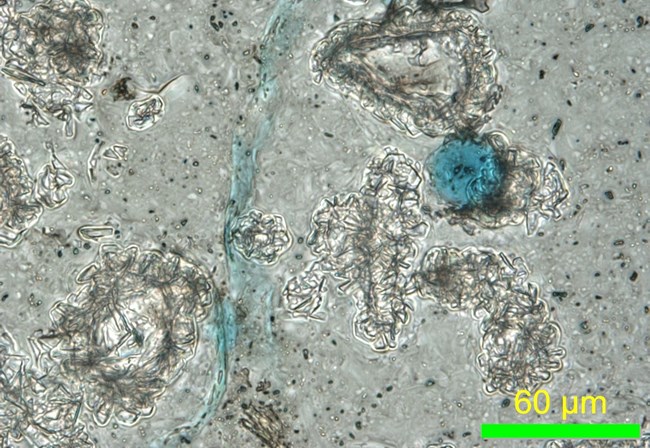Last updated: July 20, 2023
Article
Podcast 126: Exploring Non-Destructive Analysis of Ceramics
Nondestructive micro-analysis of ceramics

Photo courtesy of Chandra Reedy
Chandra: I'm Chandra Reedy from the University of Delaware, and I'm director of the Center for Historic Architecture and Design, which is a research center within the Joseph R. Biden Jr. School of Public Policy and Administration. And I also run our laboratory for analysis of cultural materials.
Sadie: Wonderful. Thank you so much for talking with us today. I understand you just received a grant award from NCPTT to do some research on non-destructive microanalysis of ceramics. If you want to tell us a little bit about this project and how this project started?
Chandra: I'm really excited about this project. It's using a relatively new instrument that's currently being used mainly in industry, and as far as I know, it's only been used with one or two cultural material projects and those were with paintings, so I think it will be very useful for ceramics as well. And it's called Mirage OPTIR microscopy, and that stands for an infrared and Raman microscope with optical photothermal spectroscopy. And basically, what it does is it allows analysis of very tiny slots, less than a micron in spatial resolution, with no surface preparation or sampling needed and there's no surface contact. And you can get analyses of both crystalline and amorphous or glassy phases. It directs a laser onto a surface and that causes a photothermal effect when the sample absorbs infrared radiation, and it's reflected back with a spectra that's called an OPTIR Spectra that's collected using a photon probe.
And what's important is that this OPTIR Spectra is a really good match for FTIR Spectra, and that FTIR is a very long-standing analytical technique and so there are a lot of databases already available that allow you to identify what material you have. And the photon probe also acts as a Raman excitation source so you can get simultaneous Raman analysis, which means you have a lot of data to help you pin down what material you have. And again, with Raman spectroscopy, there's already large databases available so you can compare your spectra to those.
Why this technology could be a game changer

Photo courtesy of Chandra Reedy
I guess I got interested in this because I was already working in a shared analytical facility that our university has where there's a lot of instruments, and that's very helpful for small labs like mine. We don't get multimillion dollar grants in our field so I can't afford most of these instruments or technicians to keep them maintained and all that. So I was working in there on another project and they got this new instrument recently, and so they held a workshop to show what it can do and I attended that. And it looked like a lot of potential applications to ceramics so I decided to give it a try and this grant allows me to experiment with it.
If you're working in an art museum, you have intact ceramic vessels, and so you're not going to take a sample from that. It's not advised. I think in the past, people drilled little samples from the bottom, but nobody would do that today. So in a museum then, they're looking at the entire large object. And there are techniques you can do such as X radiography to look at manufacturing method, and there are some surface analysis techniques like the FTIR and Raman that I've just spoken about. There are some that can be done without sampling to try to identify decorative areas, the materials that were used there.
In archeology, it's a little bit different because we have sherds, and if you've been at an archeological site where there are ceramics, you have a lot of sherds, bags and bags and bags full of sherds. So one might think, well, who cares if it's destructive or not? But actually, it's very helpful to be able to analyze a sherd non-destructively so you still have it intact at the end of your analyses, and then you can use it for other methods of analyses and that can be very helpful to do multiple methods on the exact same piece so you know that your results, if they vary, it's not because you have different materials. And so this could be very useful because we could get a lot of information and then we still have the object at the end. And if somebody wants to come and replicate your analysis later, they can on the exact same piece, or if new methods of analysis become available, you can use the exact same piece.
If you want to take a slice off that piece for thin section analysis, which many archeologists do, then you can analyze it first and then you can compare your thin section with the original analyses. And if you don't cover your thin section, if you just polish the surface, you can use that for microscopy and then you can use the same technique to analyze all of the tiny little crystals in the glaze and analyze specific spot or to do phase analyses of the entire thin section. So there's a lot of advantages to non-destructive analyses, even with archeological sherds.
The goal of the project

Photo courtesy of Chandra Reedy
So I think based on how this technique has worked for other fields and other kinds of materials, I think it should work for this and I will find out soon, but I'm pretty sure that it will.
My real goal is to be able to better understand the knowledge and experimentation history and technological achievement of past craftspeople to see and better appreciate how they learned to control their materials and their production processes to make objects that met specific functions with better and better performance. And I think that understanding that past technological history might help us in understanding today's technological challenges and how to overcome them. And so I think this project might be a major breakthrough because it's going to allow us to do things that I haven't been able to do before in terms of fast analysis with no preparation and identifying nanometer size phases and materials, so that will give a lot of clues about these past technological processes that were developed.
And also, I think it will help us to better understand deterioration. Another goal of mine is to be able to better preserve these past materials for the future, and so understanding what deterioration they've already undergone in burial and how they might better be preventively preserved or treated in conservation approaches will help keep those objects into the future so that others can use them for analysis when new techniques become available to them.
Sadie: Well, I'm excited about what this means for the future of conservation and laboratory analysis and archeological assemblages, and what this is going to do for the archeological record. And I want to say thank you so much for talking with me today about your project, and I'm just really excited.
Chandra: Thank you for talking with me, and I hope to be able to report some positive results a little later on.
Read other Preservation Technology Podcast articles or learn more about the National Center for Preservation Technology and Training.
